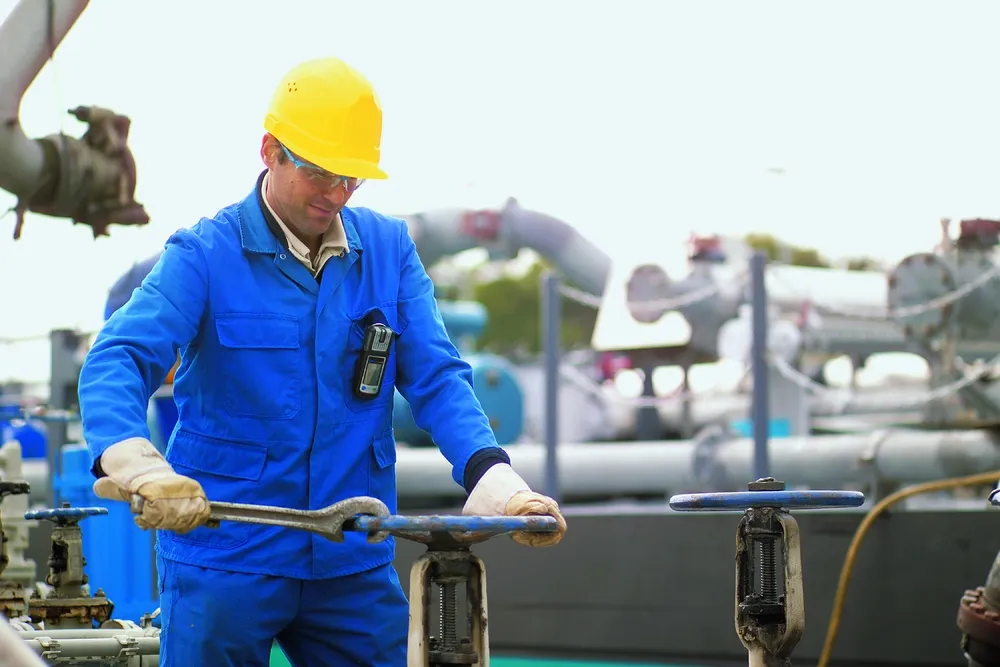To ensure workplace safety, learn essential oil and gas sensor safety tips. Use personal protective equipment and recognize danger with these tips.
As a leader in oil and gas safety, it’s important to stay up-to-date with the latest in sensing technology. One of the most crucial pieces of equipment for any oil and gas operation is a sensor that can detect potential fire or explosion hazards.
Without knowing exactly what’s occurring within your facility, you could be at risk of an accident due to faulty wiring or other environmental elements. To ensure that your facilities are safe for personnel and property, here are 6 essential tips every business should consider when using oil and gas sensors in their daily operations.
Read Now: HUMIDIFIERS VS DEHUMIDIFIERS: WHAT ARE THE DIFFERENCES?
Install the sensor in a safe place away from flammable materials
When it comes to installing a sensor, it’s not just about ensuring it’s placed in a convenient location. Safety should always be a top priority. That’s why it’s essential to find a spot that’s far away from any flammable materials.
By taking this precautionary measure, you’re protecting yourself and others in the area from potential harm. Whether it’s in a home or workplace, it’s important to take the time to find the perfect placement for your sensor to ensure peace of mind and safety for everyone. Remember, every small step you take towards safety can make a big difference in the long run.
Check for any leaks or corrosion before connecting the sensor to the power supply
Before connecting the sensor to a power supply, it is important to inspect for leaks or corrosion. Failure to do so can lead to potential safety hazards or inaccurate readings. Taking the time to carefully examine the sensor ensures that it will perform reliably and efficiently.
Additionally, it helps to prolong the lifespan of the sensor, saving both time and money in the long run. By making it a habit to check for any signs of damage or wear, you can guarantee that your equipment is in proper working order and avoid frustrating and costly issues down the line. Taking the necessary precautions can make all the difference in a successful and effective project.
Invest in a gas detector with two alarm levels, one for low concentrations and one for higher concentrations of gas
Investing in a gas detector with two alarm levels is crucial for keeping yourself and your loved ones safe. Whether you are working in an industrial setting or simply want to ensure your home is free of harmful gases, a detector with this feature is a must-have.
With the ability to detect both low and high concentrations of gas, you can rest easy knowing that you will be alerted to any potential dangers before they become life-threatening. Don’t leave your safety to chance; invest in a gas detector with two alarm levels today.
Ensure that all personnel in the vicinity of the sensor are properly trained on its use and safety protocols
When it comes to working with sensitive equipment like sensors, safety should be a top priority. That’s why it’s crucial for all personnel in the vicinity of the sensor to be properly trained on its use and safety protocols.
Not only does this ensure the safety of those around the equipment, but it also helps maintain the integrity of the sensor’s readings. With the right training, users can handle any potential hazards or malfunctions with confidence and avoid any potential accidents.
Make sure everyone is wearing the appropriate safety equipment, such as masks and protective eyewear
When it comes to safety, it’s always better to be safe than sorry. That’s why it’s important to ensure that everyone is wearing the appropriate safety equipment—whether it’s masks, protective eyewear, or any other necessary gear—before starting any potentially hazardous activity.
Not only does this protect individuals from harm, but it also prevents accidents from occurring, which could save lives. By taking these simple precautions, you can create a safer environment for everyone involved, making work and play more enjoyable for all.
Monitor the sensors regularly to ensure they are working correctly
When it comes to sensor technology, ensuring that it is functioning correctly is a top priority. No matter what the application, from industrial settings to personal use, sensors are critical components that provide data and insights that inform decision-making.
That’s why regular monitoring is so important. Checking sensors for any glitches or malfunctions can prevent costly downtime, errors, or even safety hazards. It’s a simple task that directly impacts the performance and reliability of the system as a whole.
Installing and monitoring an oil or gas sensor can be a daunting task, but when equipped with the right knowledge, it can be done safely and efficiently. When all these steps are followed, you can rest assured knowing that your oil or gas sensor is keeping you safe.
Read Now: Is Recycled Gold Better Than Mined?
Michael C Vang is a passionate blogger. He has been blogging since 2013 on a variety of topics. He is committed to creating informative and engaging content that helps readers learn more about everything.



